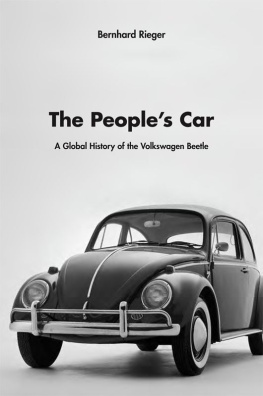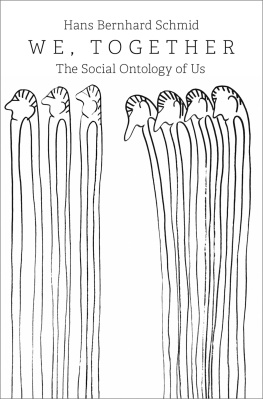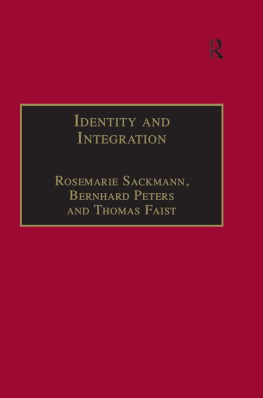Copyright 2013 by the President and Fellows of Harvard College
All rights reserved
Jacket design: Tim Jones
Jacket photo: 1965 Volkswagen Beetle
Copyright Transtock/Corbis
The Library of Congress has cataloged the printed edition as follows:
Rieger, Bernhard, 1967
The peoples car : a global history of the Volkswagen Beetle / Bernhard Rieger.
p. cm.
Summary: The Peoples Car is a transnational cultural history tracing the Beetle from its origins in Nazi Germany to its role in the postwar West German economic miracle to its popularity in midcentury Europe and the U.S., second career in Mexico and Latin America, and revival in the late 1990sProvided by publisher.
Includes bibliographical references and index.
ISBN 978-0-674-05091-4 (alk. paper)
1. Volkswagen Beetle automobileHistory. I. Title. II. Title: Global history of the Volkswagen Beetle.
TL215.V6R54 2013
629.222'2dc23 2012029928
Prologue
This model will open up the automobile to millions of new customers on low incomes, Adolf Hitler predicted in February 1938 as he presented the prototype of a small, inexpensive family vehicle amid much fanfare at the Berlin Auto Show. Commissioned by the fhrer and designed by Ferdinand Porsche, the bug-shaped car unveiled on the eve of World War II was indeed to become the peoples caror Volkswagen that fulfilled the dream of private auto ownership for millions. Yet it ultimately did so under circumstances Hitler never anticipated. Since the Third Reich never produced the vehicle, it was only after National Socialisms downfall that Porsches brainchild turned into the global hit that everyone now knows as the Beetle. In the postwar period, the Beetle not only played a prominent role in taking Western Europe into the age of mass motorization but also triumphed in the United States, where it became the leading small car. By the late sixties, both those living in suburban affluence and members of the counterculture rebelling against suburbia as the epitome of conformity drove Volkswagens en masse. Between 1938 and 1968, the Beetleand only the Beetleexerted a profound appeal among customers across the political spectrum from the extreme Right to the Left. In Latin America, meanwhile, the Volkswagen dominated the roads first in Brazil and subsequently in Mexico as late as the 1990s. When the curtain eventually fell on Mexican production in 2003, more than twenty-one million Beetles had rolled off assembly lines across the world. The Beetles charm, however, by no means ceased with the end of manufacture. Hundreds of thousands of people come together all over Europe and the United States each year to display, admire, and drive lovingly restored old Volkswagens. Since 1998, admiration for the original VW has also fueled sales of the New Beetle, the first of a growing number of revival cars inspired by automotive nostalgia. As millions across the world bought and drove the old Beetle, it turned into far more than a machine for enhancing individual mobility. Like Coca-Cola, it is a global icon.
On a global journey with many twists and turns, the Beetle became a commercial success that rightfully claims a prominent place among the renowned automobiles of the twentieth century. Ferdinand Porsches small creation developed into the first automobile to outsell the legendary Model T that Ford had produced between 1908 and 1927. Numerous similarities and connections exist between these two famous automobiles. In mechanical terms, the Model T and the Volkswagen were robust automobiles that many owners found reliable as well as easy to maintain. In their respective heydays, the Model T and the Beetle became objects of profound affection that expressed itself in countless loving nicknames. Their appeal lay partly in their comparatively low purchase price, which brought individual car ownership within the reach of broad sections of society. Methods of standardized mass production put Ford and Volkswagen in a position to cut costs, thereby transforming cars from luxury items into everyday commodities. As the first affordable quality vehicles available to Americans and Germans respectively, both automobiles developed a tremendous popular appeal that established them firmly within the pantheon of national icons in their homelands.
Henry Fords success in the United States between the 1900s and the 1920s attracted interest and envy on the other side of the Atlantic. When the British, French, and German publics began to discuss plans for a peoples car in the interwar period, they strove to replicate Fords accomplishments under European conditions. The German translation of My Life and Work, a work that outlines the principles behind Henry Fords factory in Highland Park, Michigan, turned into a best seller in Weimar Germany. Among its avid readers was no other than Adolf Hitler. A long-standing admirer of Henry Ford, Hitler initiated the drive for a peoples car in National Socialist Germany. Without the dictators staunch support and approval, the design Ferdinand Porsche developed between 1934 and 1938 would have been unthinkable. And when Ferdinand Porsche explored plans for an automobile factory suitable for the mass production of his prototype, he traveled to Detroit, where, among other car plants, he visited Fords factory at River Rouge.
However, a comparison between Volkswagen and Ford also reveals significant differences. Most important, the commercial success of Fords Model T was primarily an American phenomenon. To be sure, Ford expanded into a global concern during the Model Ts prime between the 1900s and 1920s, but compared to the mass market for automobiles in the United States, sales abroad paled because of the marked economic gap between America and the rest of the world after World War I. By contrast, the Beetle developed into an international best seller once it went into production after 1945, transcending its origins in the Third Reich and winning customers beyond West Germany. The Volkswagen enjoyed an exceptionally long production run, attracting drivers between the end of World War II and the turn of the millennium. The Beetle became the first automotive classic to inspire a retro vehicle. While the Model T stands out as a national product that gave rise to a global myth, the Volkswagen developed into a global commodity whose international appeal derived from numerous cultural permutations throughout its long life.
Its origins in the Third Reich, its ascent to icon of the Federal Republic, its appeal in very different environments across the globe, and its persistent market presence gave the Volkswagen Beetle an extraordinarily complex history. The Volkswagens technical virtues hold important clues for the vehicles success. Ferdinand Porsches design from the thirties provided the material foundations for a vehicle that attracted millions of customers in search of a durable, economical car with first-rate driving characteristics. When mass production began after World War II, engineers at Volkswagens corporate headquarters in Wolfsburg built on the vehicles main design traits, but persistently modified it to remedy shortcomings and adapt it to changing market conditions. The Beetle thus provides a striking reminder that, long after their initial invention, products retain their attractiveness as a result of unspectacular technical adjustments. At the same time, the management at VW displayed an acute awareness that the best technical design meets with commercial success only if manufactured to a high standard. The vehicles distinctive technical features, sustained product development, and the production methods championed at Volkswagen jointly played decisive roles in attracting countless customers in search of a good buy.













